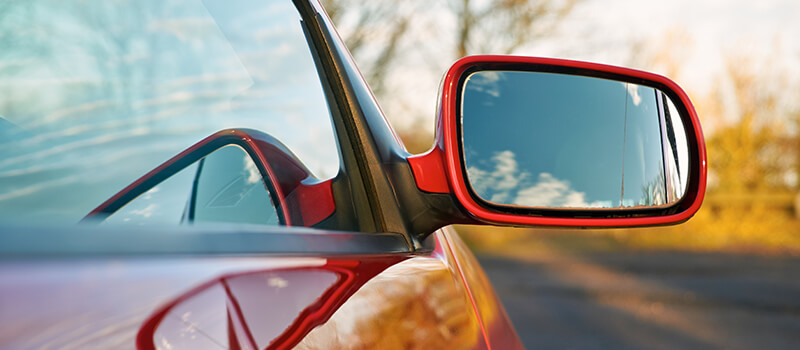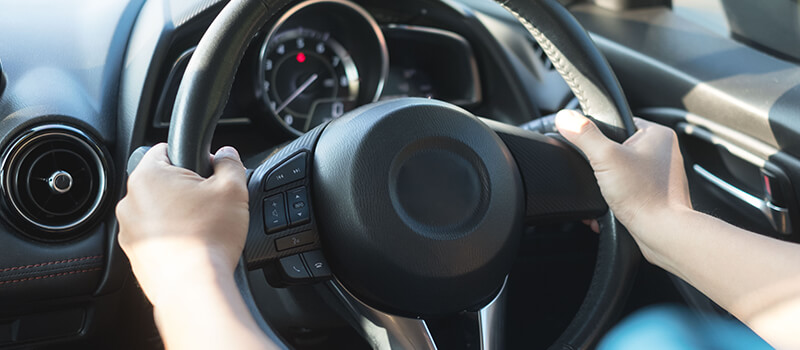Whether you have been learning to drive for many months or you plan to take an intensive course, there will always be the niggling worry of failing. You can never quite anticipate the situation or scenario you will be faced with on the day of your test; you must be prepared for every possible obstacle that may arise.
Throughout your learning to drive journey, you will regularly be reminded of the skills and routines you must keep in mind to pass, however, what are the main things not to do on your driving test that may result in a major?
Top Things Not To Do On Your Driving Test
Unfortunately, in some cases running into issues on the road during your test is simply unavoidable, you never know what others drivers are thinking and how they may react to a situation. It is up to you to stay cool, calm and collected and act quickly, following thorough steps one by one, remembering every tip your driving instructor has taught you.
Although many aspects of your practical test are unpredictable, there are a few common mistakes you must be aware of to avoid an unneeded minor, or even worse, major.
1. Don’t Forget To Use Your Mirrors
Forgetting to check all mirrors before attempting to make any sudden changes or movements is one of the biggest culprits for picking up minors during your test. When driving, you are technically sitting in one big blind spot, which is why instructors and examiners make such a fuss out of using your mirrors. Most instructors teach using the MSPSL technique, which is the process of mirror, signal, position, speed, look. Not only do the common tasks such as parallel parking or bay park count as manoeuvers, but you must also use the same process when changing lane, speeding up or coming to a stop. You must prove to your examiner that you remain aware of all of your surroundings at all times, no matter the situation, which means taking a few seconds out every now and again to glance at each mirror. No examiner is expecting you to spend several minutes studying each mirror; it means you are taking your eyes off the road, a quick glance is sufficient. Start from the left-hand mirror, move onto the interior mirror then over to your driver’s side.

2. Never Pull Out At Closed Junctions
There are two different types of junctions you may be faced with as a driver, either open or closed. An open junction indicates that the view ahead is entirely clear with nothing blocking a clear vision of the road ahead you wish to join. Open junctions are common when entering a dual carriageway or busy, fast-paced main road. Whereas, a closed junction is when the view ahead is obscured by objects such as trees, bushes or trees. It is more than likely that you will come across closed junctions when driving through an industrial estate, suburb or city.
As you approach your driving test, you will start to do mock tests with your instructor, where they will guide you through all possible routes, these will most likely include your local area. One of the biggest mistakes pupils make during their test is pulling straight out on closed junctions because they know the area and presume there will be no oncoming traffic. Always take the peep and creep approach to closed junctions, slow down as you approach the turning, stop, look both ways and then slowly start to edge out onto the road. It means you can quickly stop if you see another road user appear from a blind spot without causing any disruptions. If you were to pull straight out and force another driver to take action, you will receive a major fault.
3. Lose Control Of Steering
We are all guilty of presuming a driver is either intoxicated, distracted or inexperienced if we notice their vehicle continually swerving. It puts surrounding road users on edge, including examiners. Passing your driving test is all about reassuring your examiner that they can trust you to remain safe on the roads. Try to always achieve an equal balance between driving close to the curb and close to the white lines.
An increase in speed does increase the intensity of steering, the faster you drive, the less you have to steer to turn in different directions, be aware that the smallest movements can cause you to swerve. If your examiner notices that you struggle to maintain steering control, they may present you a major for dangerous driving.
Also be particularly aware of the importance of accurate steering when approaching turns. You must slow down enough to be able to steer at the correct timing, avoiding going too wide or too tight. Clipping the curb or cutting a corner will acquire minors.

4. Never Try To Cut In Lanes
So you’re approaching a roundabout during your test, traffic is pretty busy, and you notice that you are in the wrong lane, what do you do? Do you continue in your current lane and risk going in the wrong direction? Or do you try to cut in traffic into the correct lane?
The answer is dependant on the level of traffic ahead. If you notice in advance that you are in the wrong lane and there is a safe gap between you and the approaching vehicle, calmly indicate and start to move over. However, if you are stuck in solid traffic with no gaps, stay in the lane you are in, do not try to cut in tiny gaps. Not only will this cause frustration from other road users, but it could cause an accident, therefore running the risk of a fail. Your examiner will not give you a minor for going the wrong way; they will instead slightly alter your route.
5. Don’t Forget Blind Spots
Blind spots are one of the most significant safety hazards while driving; they can easily mask vulnerable road users such as cyclists and pedestrians within a matter of seconds. Observation skills are vital to passing your driving test and unlike mirrors, cannot be checked through a quick glance. The pillars of your car cause major blind spots, especially those at the rear of the vehicle, meaning you must physically turn round and check it is safe to move off.
Whether you receive a major or a minor for failure to check blind spots often depends on both how often it occurs and how severe your examiner takes the issue. If you are taking your test in a busy city where there are many cyclists or pedestrians, it is likely to be considered as a more pressing issue. For example, if you are learning and taking driving lessons in Oxford, failure to check blind spots could result in a major due to the area being a hotspot for tourists.

Pass Your Test First Time!
Passing your driving test is thought to be one of the easiest parts of driving, you will only have to spend 40 minutes displaying your skills and ability to stay safe on the roads. Taking a thorough and controlled approach to driving is the key for passing the first time, always bear in mind the most common reasons as to why pupils fail and ensure that you avoid similar mistakes!
